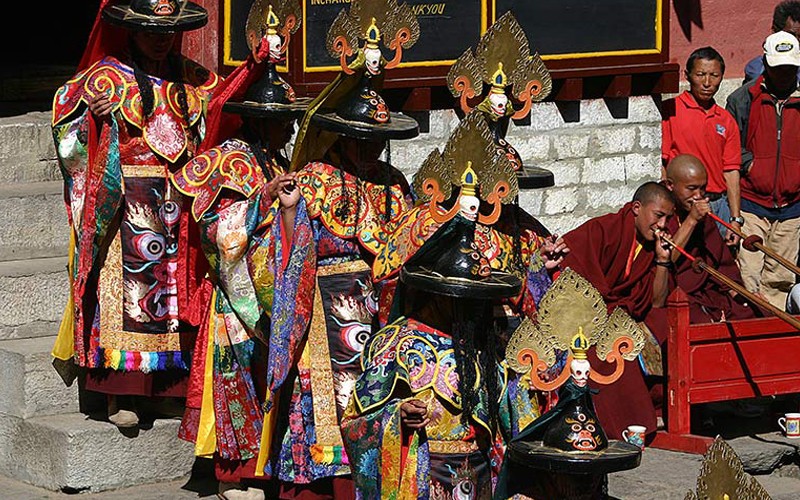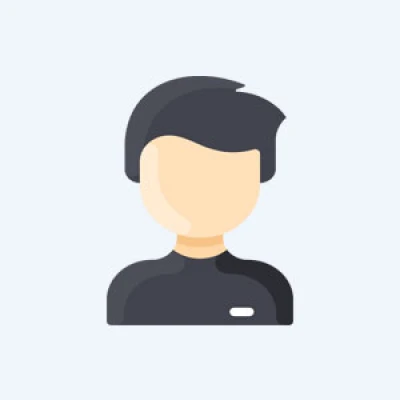Tengboche Monastery "Gompa" is a special spiritual place for Buddhist pilgrimage and Khumbu’s Sherpa families are surrounded by beautiful mountain views with rich Khumbu flora-fauna. Every autumn October/November season the Mani Rimdu Festival is very important and special for the Sherpa community also many Buddhist pilgrimages from different countries people visit the Tengbuche monastery during this festival time, each year Tenboche Monastery hosts the delightful Mani Rimdu Festival during the tenth lunar month of the Tibetan calendar.
Tengboche Monastery in Khumbu
Tengboche Monastery is one of the most famous and the oldest monasteries in the Khumbu Valley of Nepal. The monastery is surrounded by the captivating, serene mountains of the unrivaled backdrop of Mount Ama Dablam and many surrounding snow-capped peaks. Tengboche Monastery is the spiritual Buddhist center in the Everest region where the Rinpoche resides, who blesses the pilgrims, mountaineers, and travelers.
Every autumn, October/November, Tengboche Monastery hosts the colorful Mani Rimdu Festival, which is an important celebration in the Buddhist community. It is a religious gathering of meditation, songs, ritual dance, and enactments of the lives of legendary figures. Visitors are welcome to participate in the festivities, and many trekkers and climbers book their trek and climbing to coincide with the festival. It is the popular trekking route to the Everest Base Camp Trek, the Everest 3 high passes, the Cho La pass, and the Island Peak climbing.

Spiritual Tengboche Monastery in Khumbu, Nepal, Everest
Spectacular Mountain Views and Flora-Fauna
Spiritual Tengbuche Gompa is surrounded by vibrant vegetation such as pines, azaleas, and colorful rhododendrons, which makes the monastery more attractive. The magnificient monastery offers a distinct scene of Mt. Everest, Ama Dablam, Thamserku, and many more Himalayas that are alluring to visitors. It has many rest house and lodges as well as spacious camping sites.
Bond with Trekking Trail
From the Tengboche monastery, we can continue the trek to the Island peak base camp to summit the peak, crossing Kongma La pass at 5535m, which is the first pass toward the Everest 3 high passes trail. Walk to Pheriche, Kala Patthar, and the hamlet of Gorakshep, then easily reach the Everest base camp 5,364m, followed by summit Kala Patthar 5,545m, known for outstanding views of Mt. Everest and many others in the Khumbu Himalayas. It is advisable to take time to acclimatize and avoid rapid gain in altitude to avoid high altitude mountain.
History and Architecture
Tengboche Monastery is also known as the ‘DAWA CHOLING GOMPA’ or Lamas Gulu’s Hermitage because the monastery was first built in 1916 by Lama Gulu, and was destroyed by an earthquake in 1934 and was subsequently rebuilt. Tragedy befell the monastery again when it was engulfed by fire in 1989. It was re-established with the help of devoted volunteers from the area with international assistance. The resulting structure is a great work of stone masonry on display. Complete with an extended courtyard and spacious halls to facilitate religious rites and activities. Also located within its vicinity is a nunnery, as Vajrayana Buddhism doesn’t distinguish between sexes.

Trekking to Mt. Everest Base Camp, 5,364m, through the beautiful Tengboche Monastery
A Heritage within a Heritage
Heritage in its own right, Tengboche Monastery falls within the Sagarmatha National Park—a UNESCO World Heritage Site. Immersed in a Himalayan panorama, this highland offers magnificent views of nearby summits of Everest, Nuptse, Lhotse, Ama Dablam, and Thamserku. Not to mention, this region is home to a wide range of Himalayan flora and fauna. Tengboche also marks the endpoint of the “Sacred Sites Trail Project”, a circular trek inside the park, passing clockwise through ten monasteries, caves, Hermitages, and Nunneries, starting from Namche Bazaar and ending at Tengboche Monastery.
Exploring the way of the Sherpa

Spiritual Sherpa Life in Solukhumbu, Nepal
Tengboche is a central hub for insightful resources into the life of the Sherpas, who migrated from Tibet around six hundred years ago, and they constitute the primary indigenous people inhabiting the region, among others. Buddhist monasteries have always been paramount in unifying the Sherpas in their spiritual, economic, and day-to-day life. A visit to the monastery, which comprises the most important of the sacred places in the entire region, will only deepen visitors’ understanding of Sherpa culture, pride, and traditions.
What is the Mani Rimdu Festival, and when is the best time to visit?
The Mani Rimdu festival is one of the most important festivals of the Sherpa community. Each year, Tengboche Monastery hosts the delightful Mani Rimdu Festival on the tenth lunar month of the Tibetan calendar, corresponding to the month of October-November also falls in the autumn season is one of the best trekking seasons in Nepal. Many trekkers visit the Khumbu region to trek to Everest Base Camp and to witness the festival, which lasts for nineteen days. It is a religious festival that comprises ceremonies and meditation, rites, songs, dances, and enactments of legends, and is characterized by vibrant colors and noses that take center stage in one of the most spectacular settings.

Mani Rimdu Festival in Tengboche Monastery is held every Autumn on the Khumbu Valley-Everest trek route
Mani Rimdu: The meaning attributed to “Mani Rimdu” is that ‘Mani’ means ‘part of the chant of Chenreziq’ and ‘Rimdu’ means small red pills that are blessed during the festival. The red pills are blessed repeatedly and distributed to all those who attend. In the festival, performed by local monks in traditional religious attire and masks, the dance symbolized the victory of Buddhism over the ancient ‘Bon’ religion. The festival is a tradition passed on from its mother monastery, the Rongbuk. It begins with an elaborate depiction of the mandala diagram made with colored sand, which is extracted from a specified location in the hills. The mandala takes four days to finalise its form, which is then covered and is central to the religious festival that lasts for the next 10 days. The program includes 16 dance numbers with interludes for comical effect. Finally, after all the devotees have left, the monks perform a fire rite to dispel all harm to the world.
At the end of the festivities, the resident Tengboche Rinpoche of the monastery blesses the general public, after which the ‘Mask Dances’ are performed as manifestations of the legendary Guru Rinpoche, the founder of Tibetan Buddhism. The dance numbers also depict the defeat of demons and the initiation of Buddhism in Tibet. Thus, Tengboche Monastery and Mani Rimdu (festival) are major attractions for tourists in the Khumbu region.
What is the connection between Sagarmatha National Park and Tengboche Monastery?
Nepal Himalaya's connection with many national Parks, Sagarmatha National Park (SNP), established in July 1976, is the second most popular national park in Nepal, which is significant on a global, cultural, and environmental scale. With four peaks over 8000 meters, the SNP is one of the world's most popular mountain tourist destinations. Tengboche Monastery lies in the territory of Sagarmatha National Park. That’s why it’s sometimes also referred to as heritage within a heritage site.
Sagarmatha National Park is known to have a wide range of species, including endangered and rare Snow Leopard and Panda. It was gazetted as a place of incredible importance by UNESCO in 1979.
When is the best time to visit Tengboche Monastery?
The best time to visit the monastery is during the festival time, when the celebration of Mani Rimdu is held. The festival is celebrated between mid-October and mid-November period. So, planning at this time can be beneficial in terms of the experiences and cultural attractions you witness in the Khumbu highlands of Nepal. Both seasons (spring and autumn) are the best times to visit Tengboche Monastery. In these seasons, the weather and climate are moderate, with fine (slightly warmer than winter) and better visibility. You can explore the mountain vistas and the corresponding culture of the Sherpas in Nepal.
Are you planning the Everest Base Camp trek? Tengboche Monastery is a wonderful place where you can combine Gokyo Lakes, Everest Base Camp, and Tengboche Monastery in the Khumbu region. Everest Three Passes Trail could make a great deal if you want to explore and do an adventurous high-altitude trek experience in the Everest region of Nepal. Even more experienced travelers can submit the Island Peak and Everest Base Camp Trek, which would be the best combination of activities, including touching the Tengboche Monastery.





